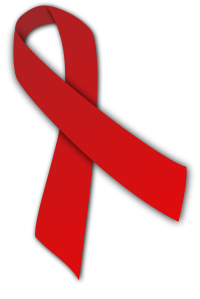
Photo from wikipedia
The aim of this study is to describe the discordance between the self-perceived risk and actual risk of HIV among young men who have sex with men (YMSM) and its… Click to show full abstract
The aim of this study is to describe the discordance between the self-perceived risk and actual risk of HIV among young men who have sex with men (YMSM) and its associated factors. An online, cross-sectional study was conducted with 405 men recruited from an Argentinian NGO in 2017. Risk discordance (RD) was defined as the expression of the underestimation of risk, that is, as a lower self-perception of HIV risk, as measured with the Perceived Risk of HIV Scale, than the current risk of HIV infection, as measured by the HIV Incidence Risk Index. Multivariate logistic regression models were used to analyze the associations between the RD and the explanatory variables. High HIV risk was detected in 251 (62%), while 106 (26.2%) showed high self-perceived risk. RD was found in 230 (56.8%) YMSM. The predictors that increased RD were consistent condom use with casual partners (aOR = 3.8 [CI 95:1.5–11.0]), the use of Growler to meet partners (aOR = 10.38 [CI 95:161–121.94]), frequenting gay bars (aOR = 1.9 [95% CI:1.1–3.5]) and using LSD (aOR = 5.44 [CI 95:1.32–30.29]). Underestimation of HIV risk in YMSM is associated with standard HIV risk behavior and modulated by psychosocial aspects. Thus, prevention campaigns aimed at YMSM should include these factors, even though clinical practice does not. Health professionals should reconsider adapting their instruments to measure the risk of HIV in YMSM. It is unknown what score should be used for targeting high-risk YMSM, so more research is needed to fill this gap. Further research is needed to assess what score should be used for targeting high-risk in YMSM.
Journal Title: International Journal of Environmental Research and Public Health
Year Published: 2022
Link to full text (if available)
Share on Social Media: Sign Up to like & get
recommendations!